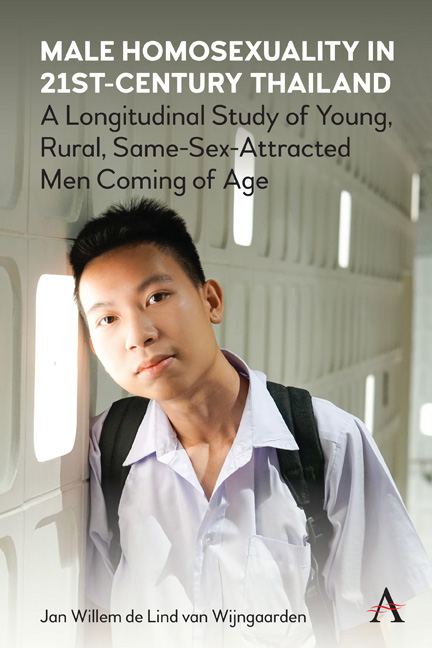 Male Homosexuality in 21st-Century Thailand
Male Homosexuality in 21st-Century Thailand Published online by Cambridge University Press: 23 March 2021
In my heart, I want somebody who takes care of my whole family. I mean, who can lift my family up higher, increase their status.
–IvesIntroduction
Several of the young men in this study, especially those from poor families in the northeast, used their youth and beauty and the promise of the pleasure provided by their bodies as a means to try to improve their lives and that of their families. Many of them tried to find a wealthy boyfriend who could help them and their families financially.
Many of the young men held the perception that viable love relationships are based on complementarity between two differing partners. Implied in this is that for a relationship to work, the partners need to have something to exchange with each other. In the case of many of the men discussed in this chapter, this involved an exchange of their beauty and youth for financial security and stability. Often this complementarity was also gendered in the imagination of the men in the study, with the desired boyfriend seen in the role of the providing husband, and they themselves in the role of the housewife.
Five out of the twenty-five participants in the study had some experience in sex work; four of them worked for brief periods of time in male sex work establishments in Pattaya, Bangkok and Phuket, and one of the five still occasionally engaged in sex work via the Internet at the time of the final interview. Sex work is usually seen as being purely about casual sex-for-money encounters, and it seems to have little to do with longer-term love and romance. However, the young men in this chapter downplayed the importance of payment and money in the stories they told about their sex work experiences. Their most important motive for engaging in it, at least at the beginning, was to find a long-term partner who could ‘take care’ of them and their families.
The chapter will start with an overview of studies on male sex work in Thailand, followed by a description of three study participants’ experiences with it.
To save this book to your Kindle, first ensure no-reply@cambridge.org is added to your Approved Personal Document E-mail List under your Personal Document Settings on the Manage Your Content and Devices page of your Amazon account. Then enter the ‘name’ part of your Kindle email address below. Find out more about saving to your Kindle.
Note you can select to save to either the @free.kindle.com or @kindle.com variations. ‘@free.kindle.com’ emails are free but can only be saved to your device when it is connected to wi-fi. ‘@kindle.com’ emails can be delivered even when you are not connected to wi-fi, but note that service fees apply.
Find out more about the Kindle Personal Document Service.
To save content items to your account, please confirm that you agree to abide by our usage policies. If this is the first time you use this feature, you will be asked to authorise Cambridge Core to connect with your account. Find out more about saving content to Dropbox.
To save content items to your account, please confirm that you agree to abide by our usage policies. If this is the first time you use this feature, you will be asked to authorise Cambridge Core to connect with your account. Find out more about saving content to Google Drive.